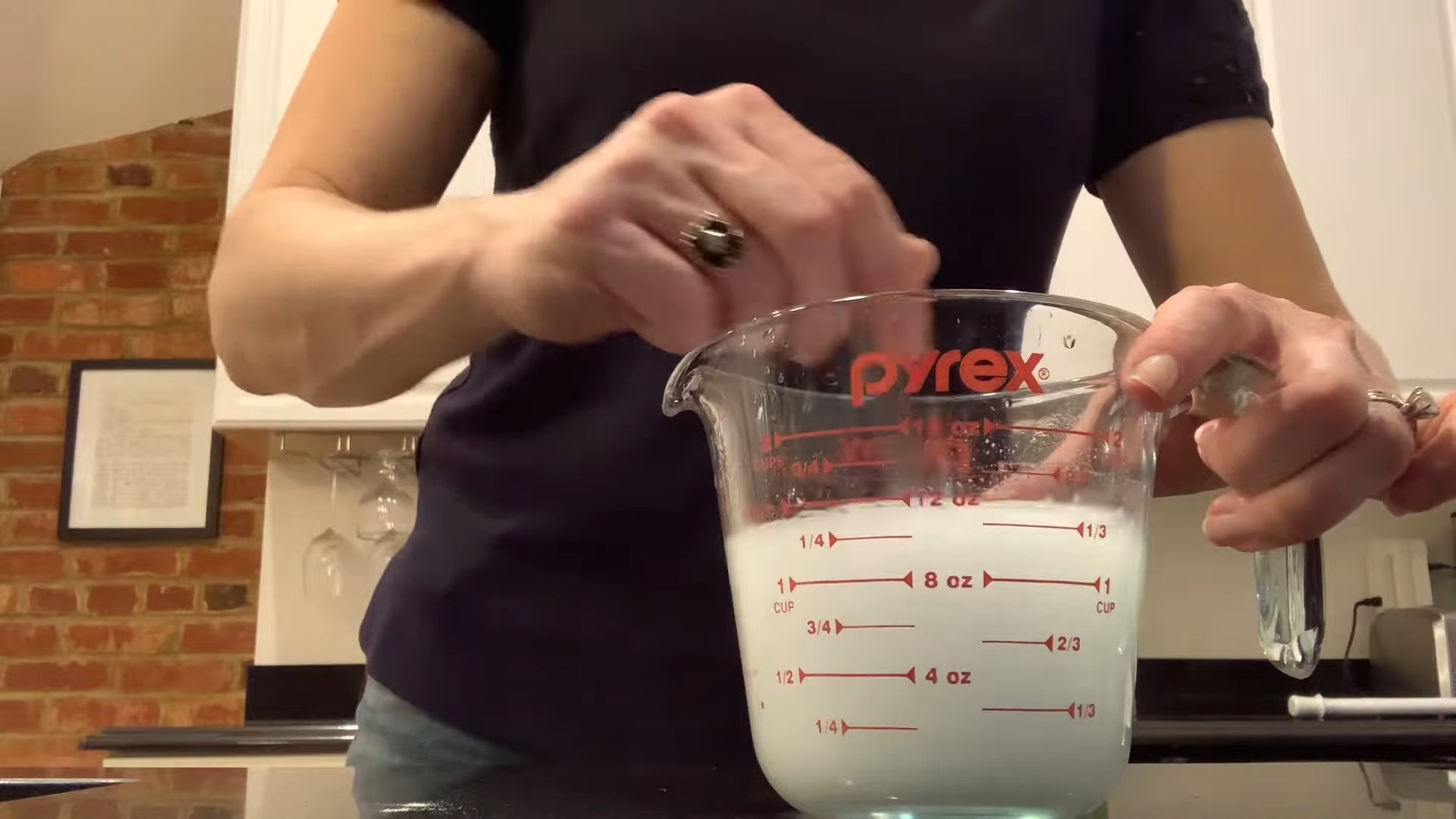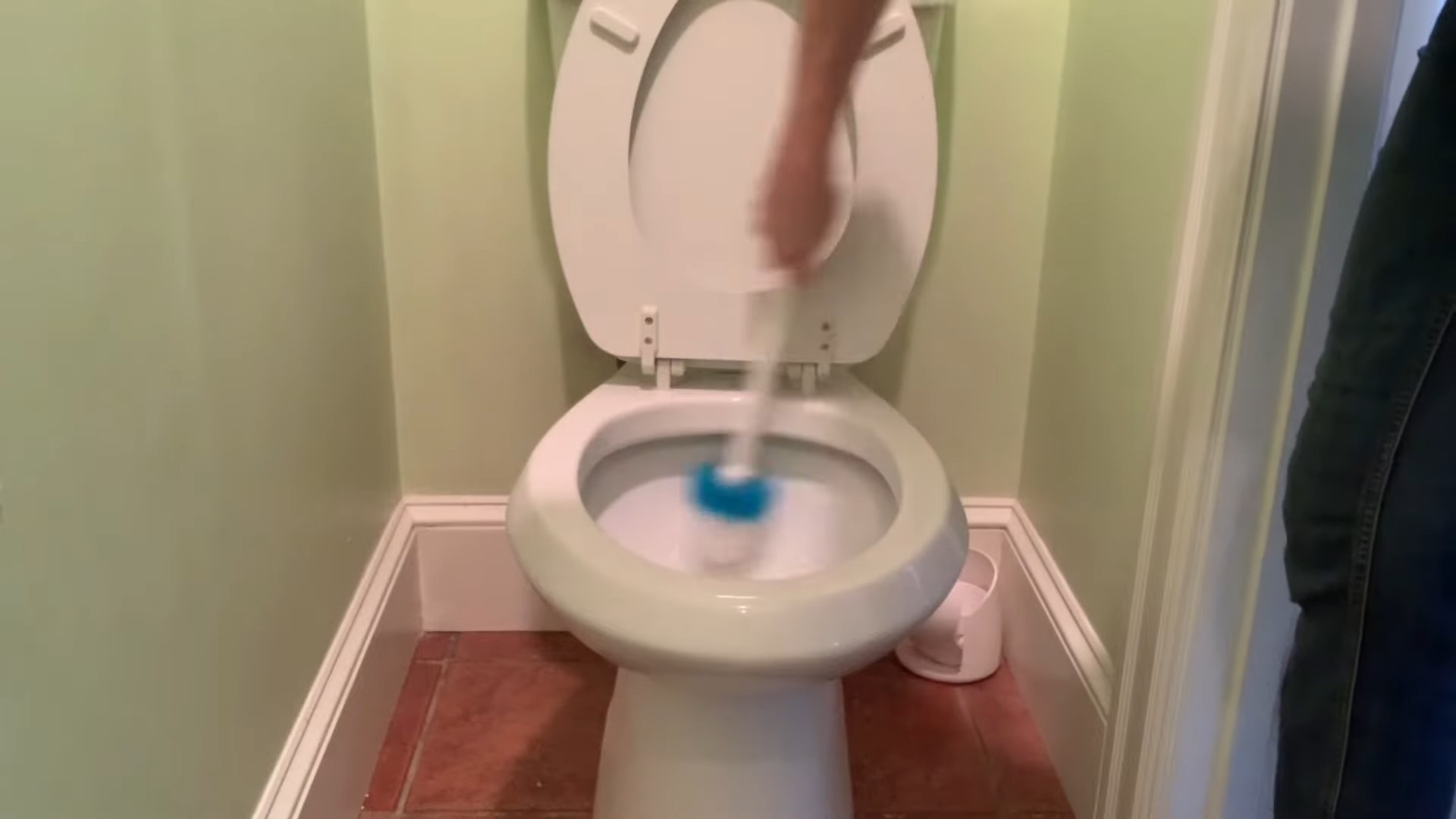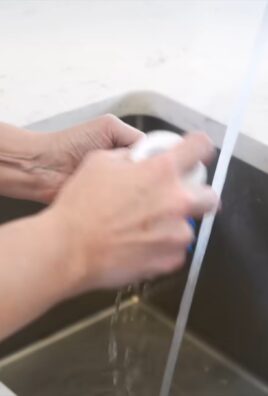DIY Cleaning Products at Home: Unleash Your Inner Eco-Warrior and Save Money!
Are you tired of harsh chemicals and sky-high prices for your cleaning supplies? I know I was! That’s why I dove headfirst into the world of DIY cleaning products at home, and let me tell you, it’s been a game-changer. For generations, our grandmothers relied on simple, natural ingredients to keep their homes sparkling, a tradition rooted in resourcefulness and a deep understanding of nature’s power. Think about it – vinegar, baking soda, and lemon juice have been cleaning staples long before fancy detergents hit the shelves.
But why should you bother with making your own cleaners? Well, for starters, you’ll be ditching those questionable chemicals that can irritate your skin and pollute your home. Plus, you’ll be amazed at how much money you can save! Creating your own DIY cleaning products at home is incredibly budget-friendly. This article will guide you through easy-to-follow recipes and clever hacks that will transform your cleaning routine. Get ready to create a healthier, happier home, one DIY cleaner at a time!

DIY Cleaning Products: Natural Solutions for a Sparkling Home
Hey there, fellow cleaning enthusiasts! Are you tired of harsh chemicals and sky-high prices for cleaning products? I totally get it! That’s why I’m super excited to share my favorite DIY cleaning recipes using simple ingredients you probably already have in your pantry. Not only are these solutions eco-friendly and budget-friendly, but they’re also surprisingly effective. Let’s ditch the toxins and get our homes sparkling naturally!
All-Purpose Cleaner
This is my go-to cleaner for pretty much everything – countertops, sinks, appliances, you name it! It’s gentle enough for everyday use but strong enough to tackle grime and grease.
Ingredients:
* 1/2 cup white vinegar
* 1/4 cup baking soda
* 1 liter hot water
* 10-15 drops essential oil (lemon, lavender, tea tree, or eucalyptus are great choices)
* Spray bottle
Instructions:
1. Combine Ingredients: In a large bowl, dissolve the baking soda in the hot water. Be careful, it will fizz!
2. Add Vinegar: Slowly pour in the white vinegar. It will fizz again, so do it gradually.
3. Add Essential Oils: Add your chosen essential oils. These not only add a pleasant scent but also have antibacterial and antiviral properties.
4. Transfer to Spray Bottle: Carefully pour the mixture into a spray bottle.
5. Use and Store: Spray on surfaces and wipe clean with a damp cloth. Store in a cool, dark place.
Tips and Tricks:
* For extra cleaning power, let the solution sit on the surface for a few minutes before wiping.
* Avoid using this cleaner on marble or granite surfaces, as the vinegar can etch them.
* If you don’t have essential oils, you can skip them, but they do add a nice scent and extra cleaning boost.
Glass Cleaner
Say goodbye to streaks and hello to sparkling windows and mirrors! This glass cleaner is super simple and works like a charm.
Ingredients:
* 1/4 cup white vinegar
* 2 cups water
* Spray bottle
* Microfiber cloth
Instructions:
1. Combine Ingredients: Mix the white vinegar and water in a spray bottle.
2. Spray and Wipe: Spray the solution onto the glass surface.
3. Wipe Clean: Use a clean microfiber cloth to wipe the glass dry. Microfiber cloths are key to streak-free results!
Tips and Tricks:
* Use newspaper for an even more streak-free shine! Just crumple it up and use it to wipe the glass dry.
* Avoid cleaning windows on a sunny day, as the solution can dry too quickly and leave streaks.
* For stubborn spots, let the solution sit for a minute or two before wiping.
Toilet Bowl Cleaner
Keep your toilet bowl fresh and clean with this easy DIY cleaner. It’s a natural alternative to harsh chemical cleaners.
Ingredients:
* 1/2 cup baking soda
* 1 cup white vinegar
* 10-15 drops tea tree essential oil (optional, but great for its antibacterial properties)
Instructions:
1. Sprinkle Baking Soda: Sprinkle the baking soda into the toilet bowl.
2. Pour Vinegar: Slowly pour the white vinegar over the baking soda. It will fizz!
3. Let it Sit: Let the mixture sit for at least 30 minutes, or even overnight for a deeper clean.
4. Scrub and Flush: Scrub the toilet bowl with a toilet brush and then flush.
5. Add Essential Oil (Optional): Add a few drops of tea tree oil after flushing for a fresh scent and extra cleaning power.
Tips and Tricks:
* For extra cleaning power, pour a cup of baking soda into the toilet bowl the night before and then add the vinegar in the morning.
* You can also use a toilet bowl brush to scrub the bowl after pouring in the vinegar and baking soda.
* For a refreshing scent, add a few drops of lemon or lavender essential oil to the bowl after flushing.
Drain Cleaner
Clogged drains are a pain, but you don’t need harsh chemicals to clear them! This DIY drain cleaner is a safe and effective alternative.
Ingredients:
* 1/2 cup baking soda
* 1 cup white vinegar
* Boiling water
Instructions:
1. Pour Baking Soda: Pour the baking soda down the drain.
2. Pour Vinegar: Pour the white vinegar down the drain after the baking soda. It will fizz!
3. Let it Sit: Let the mixture sit for 30 minutes.
4. Flush with Boiling Water: Carefully pour a pot of boiling water down the drain.
Tips and Tricks:
* For stubborn clogs, repeat the process.
* You can also use a plunger to help dislodge the clog after flushing with boiling water.
* To prevent clogs, flush the drain with hot water after each use.
Furniture Polish
Bring your wooden furniture back to life with this simple and natural furniture polish.
Ingredients:
* 1/4 cup olive oil
* 1/2 cup white vinegar or lemon juice
* Soft cloth
Instructions:
1. Combine Ingredients: Mix the olive oil and white vinegar (or lemon juice) in a small bowl.
2. Apply to Furniture: Dip a soft cloth into the mixture and apply it to the wooden furniture in a circular motion.
3. Buff: Use a clean, dry cloth to buff the furniture until it shines.
Tips and Tricks:
* Test the polish on an inconspicuous area of the furniture first to make sure it doesn’t damage the finish.
* Use a small amount of polish at a time to avoid leaving a greasy residue.
* For extra shine, add a few drops of essential oil, such as lemon or orange, to the polish.
Laundry Detergent
Making your own laundry detergent is easier than you think, and it’s a great way to save money and reduce your exposure to harsh chemicals.
Ingredients:
* 1 cup washing soda (sodium carbonate)
* 1 cup borax (sodium borate)
* 1 bar of castile soap (like Dr. Bronner’s), grated
Instructions:
1. Grate the Soap: Grate the castile soap using a cheese grater.
2. Combine Ingredients: In a large bowl, combine the washing soda, borax, and grated castile soap.
3. Mix Well: Mix the ingredients thoroughly.
4. Store: Store the detergent in an airtight container.
5. Use: Use 1-2 tablespoons of detergent per load of laundry.
Tips and Tricks:
* You can add a few drops of essential oil to the detergent for a fresh scent.
* For heavily soiled clothes, you can add a little extra detergent.
* Washing soda and borax can be found in the laundry aisle of most grocery stores.
Oven Cleaner
Cleaning the oven is a chore that everyone dreads, but this DIY oven cleaner makes it a little easier.
Ingredients:
* 1/2 cup baking soda
* Water
* Spray bottle
* Scrubbing sponge
Instructions:
1. Make a Paste: Mix the baking soda with enough water to form a paste.
2. Apply to Oven: Spread the paste all over the inside of the oven, avoiding the heating elements.
3. Let it Sit: Let the paste sit for at least 12 hours, or overnight.
4. Spray with Water: Spray the oven with water to loosen the paste.
5. Scrub and Wipe: Scrub the oven with a scrubbing sponge and wipe clean with a damp cloth.
Tips and Tricks:
* For stubborn stains, you can use a razor blade scraper to gently scrape them off.
* You can also add a few drops of lemon essential oil to the paste for a fresh scent.
* Wear gloves to protect your hands from the baking soda.
Dish Soap
This DIY dish soap is gentle on your hands and effective at cleaning dishes.
Ingredients:
* 1 cup grated castile soap
* 1/4 cup water
* 1 tablespoon white vinegar
* 10-15 drops lemon essential oil (optional)
Instructions:
1. Melt the Soap: Melt the grated castile soap in a double boiler or in the microwave. If using the microwave, heat in 30-second intervals, stirring in between, until melted.
2. Add Water and Vinegar: Stir in the water and white vinegar.
3. Add Essential Oil (Optional):

Conclusion
So, there you have it! Ditching the harsh chemicals and embracing the power of homemade cleaning solutions is not just a trend; it’s a conscious choice for a healthier home, a happier planet, and a lighter wallet. We’ve explored some fantastic recipes, proving that effective cleaning doesn’t require a trip to the store for expensive, potentially harmful products. The beauty of these DIY cleaning products lies in their simplicity, affordability, and the peace of mind that comes with knowing exactly what you’re using to clean your living space.
Why is this a must-try? Because it empowers you to take control of your cleaning routine. You’re no longer at the mercy of marketing claims or hidden ingredients. You’re crafting solutions tailored to your specific needs and preferences. Think about it: a lemon-infused all-purpose cleaner that smells divine, a gentle yet powerful laundry detergent that’s safe for sensitive skin, or a sparkling glass cleaner that leaves no streaks behind. These are the rewards of embracing the DIY approach.
But the journey doesn’t end here! Feel free to experiment with variations to personalize your cleaning arsenal. Add a few drops of tea tree oil to your all-purpose cleaner for its antibacterial properties. Infuse your vinegar with orange peels for a citrusy boost. Use different essential oil blends to create unique and uplifting scents. The possibilities are endless!
Consider these variations:
* **For a stronger disinfectant:** Add a tablespoon of borax to your all-purpose cleaner.
* **For a natural air freshener:** Simmer citrus peels, cinnamon sticks, and cloves in water on the stovetop.
* **For a gentle scrub:** Mix baking soda with a small amount of water to create a paste.
We understand that transitioning to DIY cleaning can feel daunting at first, but trust us, it’s easier than you think. Start with one or two recipes and gradually incorporate more into your routine. You’ll be amazed at how quickly you can transform your cleaning habits and create a healthier, more sustainable home.
The environmental impact of switching to **DIY cleaning products** is significant. By reducing your reliance on commercially produced cleaners, you’re minimizing plastic waste, decreasing the demand for harsh chemicals, and contributing to a cleaner, healthier planet for future generations. It’s a small change that can make a big difference.
We wholeheartedly encourage you to try these DIY cleaning tricks and share your experiences with us. Let us know which recipes you loved, what variations you discovered, and any tips you have for fellow DIY enthusiasts. Together, we can create a community of conscious consumers who are committed to cleaning their homes in a safe, sustainable, and effective way. Share your photos and stories on social media using #DIYCleaningRevolution and let’s inspire others to join the movement! We are excited to hear your feedback and learn from your experiences. Your insights will help us refine these recipes and create even better DIY cleaning solutions for everyone. So, grab your ingredients, put on your apron, and let’s get cleaning!
Frequently Asked Questions (FAQ)
What are the benefits of using DIY cleaning products?
DIY cleaning products offer a multitude of benefits. Firstly, they are often significantly cheaper than store-bought alternatives. You’re using common household ingredients that you likely already have on hand. Secondly, you have complete control over the ingredients, avoiding harsh chemicals, artificial fragrances, and other potentially harmful substances. This is especially beneficial for individuals with allergies, sensitivities, or young children. Thirdly, DIY cleaning is more environmentally friendly, reducing plastic waste and the release of harmful chemicals into the environment. Finally, it’s empowering! You’re taking control of your cleaning routine and creating solutions that are tailored to your specific needs.
Are DIY cleaning products as effective as store-bought cleaners?
Yes, when formulated correctly, DIY cleaning products can be just as effective as their store-bought counterparts. Many common household ingredients, such as vinegar, baking soda, and lemon juice, possess powerful cleaning and disinfecting properties. The key is to use the right ingredients in the right proportions and to understand their specific applications. For example, vinegar is excellent for cutting through grease and grime, while baking soda is a gentle abrasive that can remove stains and odors.
What are some essential ingredients for making DIY cleaning products?
Some essential ingredients for making DIY cleaning products include:
* **White vinegar:** A natural disinfectant and degreaser.
* **Baking soda:** A gentle abrasive and deodorizer.
* **Lemon juice:** A natural disinfectant and brightener.
* **Essential oils:** Add fragrance and antibacterial properties.
* **Castile soap:** A gentle and versatile cleanser.
* **Borax:** A natural mineral that boosts cleaning power (use with caution and research safety guidelines).
* **Washing soda:** A powerful cleaner and degreaser (use with caution and research safety guidelines).
Are there any ingredients I should avoid mixing when making DIY cleaning products?
Yes, it’s crucial to be aware of potentially dangerous combinations. **Never mix bleach with vinegar or ammonia.** This can create toxic fumes that can be harmful or even fatal. Also, avoid mixing hydrogen peroxide with vinegar in a closed container, as this can create peracetic acid, which can be irritating to the skin, eyes, and respiratory system. Always research the potential reactions of different ingredients before combining them.
How should I store my DIY cleaning products?
Store your DIY cleaning products in clean, airtight containers. Label each container clearly with the name of the product and the date it was made. Keep them out of reach of children and pets. For products containing essential oils, use dark-colored glass bottles to protect them from light degradation.
How long do DIY cleaning products last?
The shelf life of DIY cleaning products varies depending on the ingredients. Products containing water or fresh ingredients, such as lemon juice, may have a shorter shelf life (a few weeks) than those made with vinegar or baking soda (several months). If you notice any changes in color, odor, or consistency, discard the product.
Can I use essential oils in my DIY cleaning products?
Yes, essential oils can add fragrance and antibacterial properties to your DIY cleaning products. Some popular choices include lemon, tea tree, lavender, eucalyptus, and peppermint. Be sure to use pure, high-quality essential oils and to dilute them properly. Always test a small area before applying a product containing essential oils to a larger surface.
Are DIY cleaning products safe for all surfaces?
While many DIY cleaning products are safe for most surfaces, it’s always a good idea to test a small, inconspicuous area first. Avoid using acidic cleaners, such as vinegar or lemon juice, on marble, granite, or other natural stone surfaces, as they can etch or damage the stone. Also, be cautious when using abrasive cleaners, such as baking soda, on delicate surfaces.
What if I have sensitive skin?
If you have sensitive skin, it’s essential to choose gentle ingredients and to wear gloves when cleaning. Consider using castile soap as your primary cleanser and avoiding harsh chemicals or strong essential oils. You can also dilute your cleaning solutions with more water to reduce their concentration.
Where can I find more DIY cleaning recipes and tips?
There are numerous online resources, including websites, blogs, and social media groups, dedicated to DIY cleaning. Look for reputable sources that provide accurate information and safe recipes. You can also consult books or magazines on natural cleaning. Remember to always do your research and to exercise caution when trying new recipes.




Leave a Comment